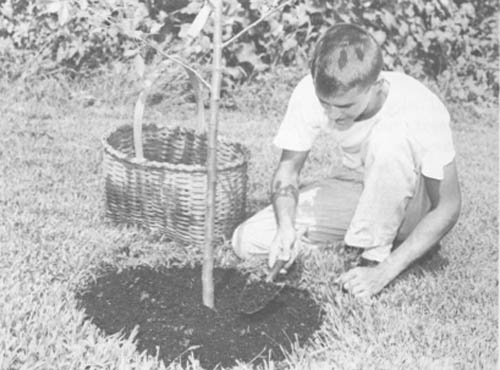The Perfect 3.3 Cent Breakfast
By Kurt Saxon
(An Economic Note: All the prices quoted on this page are in 1976 U.S. currency)
A while back some Mormons visited me and told me of a friend who had been suckered into paying $12,000 for a year’s supply of “Survival Food” for his family of five. The seller had given him a break by not charging anything for the baby.
The only good thing one can say about most commercial survival foods is that they won’t taste any worse in ten years than they do now. The…
THE FANTASTIC FLY!
by Kurt Saxon
From THE SURVIVOR; Volume Six: Issue 12
You’ve probably never given it a thought but the common house-fly is a potential asset to anyone with chickens to feed. The following ideas will enable you to cut your feed bills to zero and even give you feed to sell. (See also THE SURVIVOR Vol. 1, pages 12, 39 and 110).
The common house-fly and the larger blue and green thoraxes flies are wildly prolific. Estimates have been made that if one pair of flies should be allowed to breed…
Saving Money With A Thermos Bottle
By Kurt Saxon
Many subscribers write that they will eventually buy all my books but they can’t afford them at this time. Many are students on limited allowances. Some are on Social Security or pensions. Others are on Welfare, as I was after an injury, when I got $86.00 per month in l969. I paid $50.00 for rent and had only $36.00 left for food and incidentals. Even so, I ate better than before. Prices were indeed lower then but, surprisingly, the costs of the more basic foods have…
THE BACKYARD FISH FARM
The text and illustrations of this article are from
Organic Gardening and Farming; January, 1972
The new series of reader research projects starts with an
exciting plan to turn grass clippings into organic fish.
Dr. John H. Todd with Dr. William 0. McLarney, Director of
Aquaculture Director of
Aquaculture Studies for the New Alchemy Institute
OVER THE PAST FOUR MONTHS in the series “Shaping an Organic America” I have dealt with the urgent need to create a science and biotechnology which will permit revitalization of the countryside along organic and ecological principles. It is my belief that if such a science is developed and its findings put into practice,…
RAISING CATFISH IN A BARREL
The text and illustrations of this article are from Organic Gardening and Farming; October, 1973
The new series of reader research projects starts with an
exciting plan to turn grass clippings into organic fish.
Dr. John H. Todd with Dr. William 0. McLarney, Director of
Aquaculture Studies for the New Alchemy Institute
Philip Mahan demonstrates how a fish is
transferred from the fry tank to the barrel.
A biological food chain in the back yard produces fresh fish
for the table and compost for the garden.
By Philip and Joyce Mahan
After some study and experimentation, we have set up a productive food chain– table scraps to earthworms to…
On The Horizon: FAMINE
By Douglas S. Winnail, Ph. D., M.P.H.
From The World Ahead, Sept-Oct, 1996
Perhaps you have been too busy to notice, but the concern about our global food supply is real! Major news magazines are reporting that after a quiet few decades, talk of a world food crisis is again in the air. Government leaders, economists and scientists are seriously pondering such sobering questions as: Does the world face a global shortage? and Will the world starve? There is a growing sense of urgency.
In November 1996 the United Nations Food and Agricultural Organization will convene…
Making & Selling Tire Gardens
By Kurt SaxonRaised beds are the best way to garden, for several reasons. First, the plants are closer together so there is little weeding and greater productivity. Since they are several inches off the ground there is less stooping. The drainage is better. You supply the soil so there are no rocks, and you don’t have to dig or plow the garden. Raised beds are usually a series of small garden plots which can be put here and there wherever there is a few square feet of space.
The drawback is that they…
MAKE YOUR OWN CORN NUTS
by Kurt Saxon
You must be familiar with corn nuts. They are put up in plastic snack bags and are sold in most gas station markets. They cost about 25 cents an ounce and are made from Hickory King Corn, a larger type than feed corn.
The only difference between Hickory King and other varieties is the size. There is no difference in taste. So you can make all the corn nuts you like and be assured they are just as good as the commercial kind and cost next to nothing.
Corn…
Hunger In America
©1976 By Kurt Saxon
Last week PBS aired a weird program entitled “Hunger In America”. It was weird because not one of the families shown as examples of hungry Americans were destitute. They all had living quarters, some had jobs and even land and each had the money or food stamps which should have provided them with a more than adequate diet.
The commentator was in full sympathy with those hungry people and lamented the fact that nothing more was done. I watched this bizarre exhibition of the helplessness of the otherwise able and…
Growing Trees (Any Trees!) By The Grandma White Method
(The text & illustrations for this web page came from the 13’th printing of “The Complete Book of Composting”; Copyright 1960 by J. I. Rodale: Pages 373 through 376.)
Fruit trees will get off to the best start if fed a steady diet of compost. Humus is important if trees are to be productive, disease-free and fast-growing. Use your compost as a mulch as well as a steady source of nutrients to your growing trees.
USING COMPOST FOR TREES

